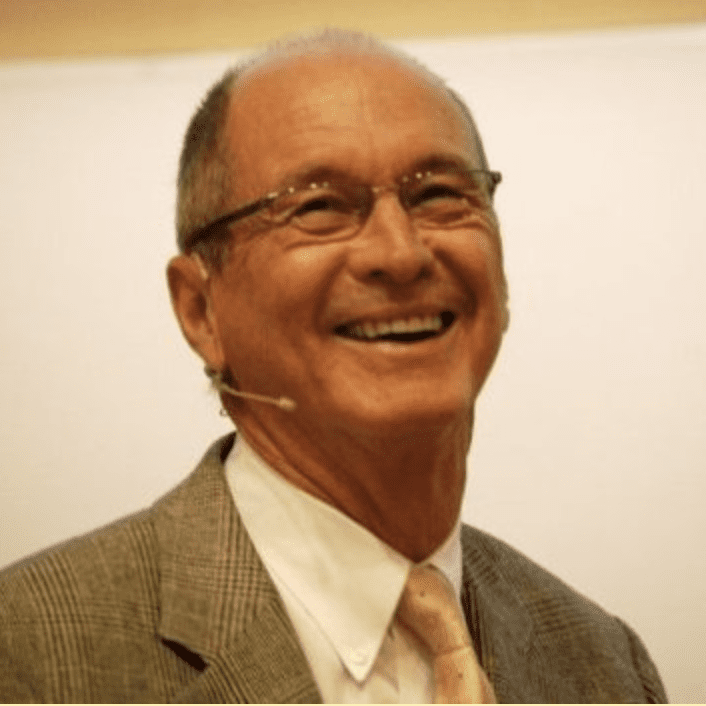Our country's education system has long been the talk of the town - from intellectuals on talk shows to parents waiting for their children outside their school gates, everyone is concerned about it and the potential solutions to rising challenges.
It is not surprising that the New Curriculum Framework 2021 will cause some waves. Before delving into the reasoning for those ripples, consider the buzzwords that have dominated the conversation: competency-based curriculum, experiential and collaborative learning, and an exam-free assessment system.
Background of NCF-2021
The NCF-2021 is the culmination of a decades-long process in our country to implement a competency-based curriculum that is intended to evaluate students’ learning in terms of completing certain competencies over time. A competency is obtained by acquiring relevant knowledge, skill, and attitude. The dramatic modification was implemented in response to the country’s unemployment problem and the growing demand for skilled human resources. The education system in Bangladesh was formerly heavily oriented on bookish knowledge and strong exam marks, which is why the country still has an inept workforce. As a result, even after completing tertiary education, an individual may not have the necessary skills for getting a job. On the contrary, the new curriculum’s ten competencies are based on the demands of the Sustainable Development Goals, the Fourth Industrial Revolution, and Vision-2041, demonstrating the new curriculum’s relevance to current and future demands and manifesting its potential to prepare a workforce ready for future challenges.
The ten core competencies that learners are expected to acquire through the competency-based curriculum from pre-primary to Grade 12 are
- Ability to express one’s views and opinions properly and creatively according to the context, respecting and understanding the opinions and propositions of others.
- Ability to take logical and the most beneficial decisions for all after considering various aspects of an issue holistically through critical thinking.
- Ability to achieve the qualities of a global citizen by showing love and loyalty to one’s own country and upholding own traditions, culture, history and heritage while respecting differences and diversity.
- Ability to take logical and the most beneficial decisions for all and solve problems with the participation of all through problem projection, quick realisation, analysis, synthesis and consideration of future significance.
- Ability to adapt to the changing world through peaceful coexistence while maintaining cooperation, respect and harmony and to play a role in creating a safer habitable world for future generations.
- Ability to artistically present and contribute to national and global welfare by creating new ways, strategies and possibilities adapting new attitudes, ideas, and perspectives.
- Ability to create and maintain risk-free, safe and acceptable personal, familial, social, state and global relationships and communications by knowing one’s own position and role in managing one's own physical and mental health.
- Ability to deal with disasters by facing risks and opportunities while keeping human dignity intact and preparing oneself for safe and secure life and livelihood in a constantly changing world.
- Ability to solve everyday problems in a changing world using mathematical, scientific and technological skills.
- Ability to engage oneself in the welfare of nature and humanity through religious discipline, honesty and moral virtues and the practice of integrity.
What is Experiential Learning?
Experiential and Collaborative Learning were two new concepts introduced in the teaching-learning process by the new curriculum. “Tell me and I forget, teach me and I may remember, involve me and I learn,” stated Benjamin Franklin, brilliantly capturing the spirit of experiential learning.

David Kolb (1993), a pioneer of experiential learning, defined learning as “the process by which knowledge is formed through the transformation of experience.” Students learn by their experiences, hands-on activities, and what they do in experiential learning.

Previously, we have seen students study hard and obtain good grades, only to be unable to demonstrate or even recall what they learned after the exam. Experiential learning can help to overcome this issue since it engages students in the learning process, ensuring deeper learning.
Furthermore, because kids learn abstract concepts through actual situations, the knowledge becomes more pertinent and relatable. Furthermore, because it places students at the center of the learning process, it allows them to be creative and curious, think critically, make decisions, and master knowledge by building themselves (Rani & Tyagi, 2022).
In simple terms, a student will learn how to prepare a cup of tea by doing it rather than reading about it. Because kids learned it through hands-on activities, the chances of them forgetting how to brew a cup of tea are slim to none.
The Essence of Collaborative Learning
I am what I am because of who we are
To understand the essence of collaborative learning, let us return to ancient Africa, where the word ‘Ubuntu’ meant ‘I am what I am because of who we all are,’ acknowledging our existence as creatures who survived and created human civilization through collective, collaborative, and cooperative efforts. Collaborative learning refers to the ability of learners to work collaboratively with other learning counterparts in groups to enrich each other’s learning perspectives and completely achieve their learning objectives as a learning team (Wijaya, 2021).
However, in the competition to outperform one’s peers, pupils were unable to learn to collaborate, which is one of the abilities required to survive and prosper in the twenty-first century.
Furthermore, learners are expected to gain various benefits beneficial to their future working fields through collaborative learning practices, such as becoming critical thinkers, effective problem solvers, possessing enticing presentation skills, improving their social skills, and knowing how to deal with potential conflicts (Johnson and Johnson, 2009). Simply put, kids will learn with their peers, sometimes from their peers, and without undermining their peers for the sake of competitiveness through collaborative learning.
Evaluation Based on Continuous Assessment
Another characteristic of the new curriculum that has sparked much interest is the significantly reduced emphasis on examinations, with the majority of the evaluation based on continuous assessment. For years, examinations were blamed for putting undue strain on young minds and forcing them to memorize texts without even bothering to comprehend them. This exam-oriented education produces a huge number of stressed pupils with inadequate psychological development, repressed personality and self-hatred, and a general lack of development in other abilities (Kirkpatrick & Zang, 2011). This style of schooling will also result in “high scores but low ability,” which means that the student can only earn high results on tests but cannot equal them in their daily lives (Yuan, 2004).
Continuous assessment, on the other hand, is an evaluation method that focuses on the collecting of continuous learning data on learner performance (Wiliam, 2011a, 2011b). Assessment is interwoven inside regular classroom activities with this method, and students can display their learning spontaneously, allowing the teacher to recognize their inadequacies in the natural setting and take the required steps to address those difficulties, ensuring students’ complete growth. Furthermore, it is an evaluation technique in which a student’s final grade in any topic systematically examines the progress of the student’s internal learning (Xu & Brown, 2016). In simpler terms, continuous assessment is not about assessing a student’s learning through a 2-hour examination in a controlled and perhaps intimidating environment. It considers what pupils are learning, as well as how they perform and improve on a daily basis.
Finland is a wonderful example for individuals studying education or are just interested in the global education scene, since the radical changes they implemented in their education system decades ago have made them the visionary leaders of this field. The absence of standardized tests (such as PEC, JSC, SSC, HSC etc. in our country) and the widespread presence of collaborative teaching-learning approaches are two such changes that in the NCF 2021, are hopeful because these reforms will allow children to learn for the sake of learning.
Critiques and Debates : Constructive or Speculative?
But is everything bright and beaming? Since the unveiling of the new curriculum and its unconventional characteristics, critiques and debates have been circulating from all over the country. A curriculum is the blueprint for a nation’s ambitions and its path to achieving them; there will undoubtedly be disagreements about it. But were all of the criticisms and debates constructive? Mostly not. However, it should also be considered that the lack of training and information availability for the stakeholders play a major part in this.
If one opens any newspaper or watches any television channel, one is likely to encounter news about disgruntled parents expressing their dissatisfaction with the new assessment system, about which many teachers are still puzzled. Online orientation training on the new curriculum on Muktopaath was made available for government school teachers and other government officials working in the education sector, however this was not done immediately after the new curriculum was announced. Currently, face-to-face 3-day training sessions for government primary school teachers are being held across the country.
Despite the fact that the new curriculum had already been implemented in grades 1, 2, 6, and 7, it took 11 months for teachers to receive practical training on the newly developed evaluation process. Furthermore, because the Muktopaath course was not open to everybody, parents had no means to obtain information about the new curriculum. It is reasonable to anticipate that they will not receive any assistance from their children’s school as the teachers did not have any training as well. The lack of precise information allowed room for misinformation, leading to increased misunderstanding among numerous stakeholders.
Recommendation: The Need for Communication
As previously stated, the modifications in the new curriculum provide with a much-needed glimmer of optimism by promising to rectify certain old malpractices that persist in the guise of tradition. Indeed, the concern shown by teachers and parents stems from good intentions for the children. This concern, if appropriately channeled, has the potential to play a critical role in the reform process. And this energy can be utilized by ensuring a steady flow of information and communication. Because teachers are now receiving curriculum training, we may expect them to educate parents on this topic at least in part when necessary. The parents-teachers meeting can be an excellent venue for sharing these thoughts and common concerns. In reality, the specialists engaged in the development of this curriculum might attend these meetings in turn to clear up any confusions. Regardless of the training, it is beneficial to have a solid support structure in place to connect instructors and parents with professionals via an online and/or offline communication platform. This manner, teachers and parents will feel more confident and empowered about the new curriculum’s implementation and the children’s future.
Resistance from Vested Quarters
Though parents’ protests over the curriculum make me optimistic about their genuine concern, it is also a matter of concern. Parents’ concern, if appropriately handled, can play a crucial part, but who they support is also significant. For example, the Bangladesh government has made numerous attempts to stifle the coaching and guide-book dependence, but it appears that the entities behind coachings and guide-book industries are like the indestructible Hydra that Hercules once encountered. No matter how hard one tries, it manages to survive by exploiting policy and system flaws. Students now have a true chance to grow up as independent learners in an experiential and collaborative learning environment where evaluation is not solely on exam-based grades. And once that happens, they will no longer rely on coaching centers or guide books, effectively killing this seemingly immortal beast. Knowing its demise is imminent, wouldn’t it want to attack hard one last time for the sake of survival? And if teachers and parents are not armored with the proper information and communication, they may become easy prey for the coaching-guide Hydra, shattering the implementation of that curriculum that has the potential to break the shackles of malpractices and make students fit leaders for the future.
The popular concept of Creative Destruction is what Bangladesh requires at this point. Because changing an entire curriculum with its system is something that requires uprooting the old malpractices that have historically crippled the institutions and minds equally. The multi-faceted transformation that is required for Bangladesh to rise above the traditional malpractices that we have somehow glorified for years, requires huge effort from those willing to bring about any change.
Conclusion
“It’s just another brick in the wall,” Pink Floyd said of the youngsters undergoing this mechanical, nerve-racking schooling system. Many governments around the world are attempting to break this vicious cycle. Bangladesh became a member of this club with the NCF – 2021. Promote constructive conversations and criticisms about it. Let us have talks about the difficulties of adopting such an ambitious curriculum because that is how we will be able to navigate this significant shift as a nation, not by becoming mere puppets in the hands of the edu-business mafia.
References
Johnson, D. W., & Johnson, R. T. (2009). An Educational Psychology success Story: Social Interdependence Theory and Cooperative learning. Educational Researcher, 38(5), 365–379. https://doi.org/10.3102/0013189×09339057
Kirkpatrick, R., & Zang, Y. (2011). The Negative Influences of Exam-Oriented Education on Chinese High School Students: Backwash from Classroom to Child. Language Testing in Asia, 1(3). https://doi.org/10.1186/2229-0443-1-3-36
Kolb, D. A. (1983). Experiential learning : Experience as the source of learning and development. http://ci.nii.ac.jp/ncid/BB1767575X
Rani, K., & Tyagi, T. K. (2022). Experiential Learning in School Education: Prospects and challenges. Zenodo (CERN European Organization for Nuclear Research). https://doi.org/10.5281/zenodo.7652609
Wijaya, K. F. (2021). Exploring EFL Teachers perspectives on collaborative learning activities in senior high school contexts. Journal of English Teaching, 7(2), 118–132. https://doi.org/10.33541/jet.v7i2.2341
Wiliam, D. (2011a). Embedded formative assessment: Practical strategies and tools for K-12 teachers. Solution Tree Press.
Wiliam, D. (2011b). What is assessment for learning? Studies In Educational Evaluation, 37, 3–14.
Xu, Y., & Brown, G. (2016). Teacher assessment literacy in practice: A reconceptualization. Teaching and Teacher Education, 58, 149–162. https://doi.org/10.1016/j.tate.2016.05.010
Yüan, M. (2023). Research on the Advantages and Disadvantages of cramming education. Lecture Notes in Education Psychology and Public Media, 12(1), 215–218. https://doi.org/10.54254/2753-7048/12/20230813
About the Author

Subah Binte Ahsan is a post-graduate student in Evaluation and Research at the Institute of Education and Research, University of Dhaka. She has completed her B.Ed. on Special Education from IER, University of Dhaka.
2 comments
[…] Pick How Dhaka Metro Rail Is Transforming Bangladesh’s Urban… What Bangladesh’s New Curriculum Framework Aims to Achieve Questioning the Rationale of Imposing Age Limit for… Karnaphuli Tunnel : The Case for […]
Nice summarization of the curriculum’s main characteristics. Thanks